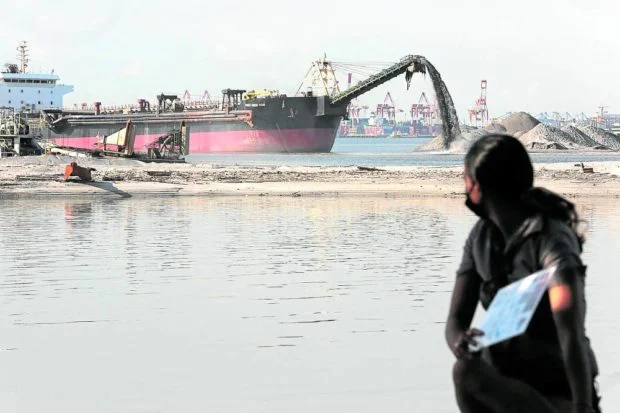Geologist warns of hazards of living in reclaimed areas
MANILA, Philippines — An expert in geology and environmental science has warned those planning to purchase reclaimed land, including on any of the multibillion-peso reclamation projects in Manila Bay, to be wary of the dangers that might come with their investment, such as land subsidence, storm surges, and tsunamis.
“My last resort is to tell anyone who wants to buy property on reclaimed land: Make sure you can get damage insurance. If you cannot, be forewarned. Don’t be a fool,” said Kelvin Rodolfo, a professor at the University of Illinois in Chicago, who received the Gawad Bayani ng Kalikasan in 2022.
In a message to the Inquirer on Tuesday, he extended his cautionary note to insurance companies, saying: “To protect themselves, insurance companies also must educate themselves of the hazards and risks” concerning any big-ticket reclamation project.
The geologist issued the warning after reviewing the proposed P34-billion Manila Waterfront City Reclamation project, a joint venture agreement that involves the reclamation and development of 318 hectares of foreshore and offshore areas of Manila Bay.
Rodolfo expressed alarm over the scale and breadth of the developments in the bay.
“Despite the clear dangers from land subsidence, storm surges, tsunamis and liquefaction during earthquakes, Manila Bay reclamation is proceeding rapidly,” he said.
He noted that, along with the revival of the mothballed Bataan Nuclear Power Plant, the massive reclamation projects on Manila Bay were among the “biggest human-made threats to the environment” in the country.
‘Very bad idea’
In a peer-reviewed article published in 2014, Rodolfo said land subsidence, or the lowering of the surface closer to sea level, delayed runoff from rains and worsened flooding and tidal occurrences.
This and other reasons were what made near-shore reclamation a “very bad idea,” he said.
Based on his study, coastal areas in Metro Manila were sinking as fast as 9 centimeters every year.
“Caloocan, an industrial area that uses large volumes of groundwater, subsided 8 cm/y in 2004 and 2005,” he said.

